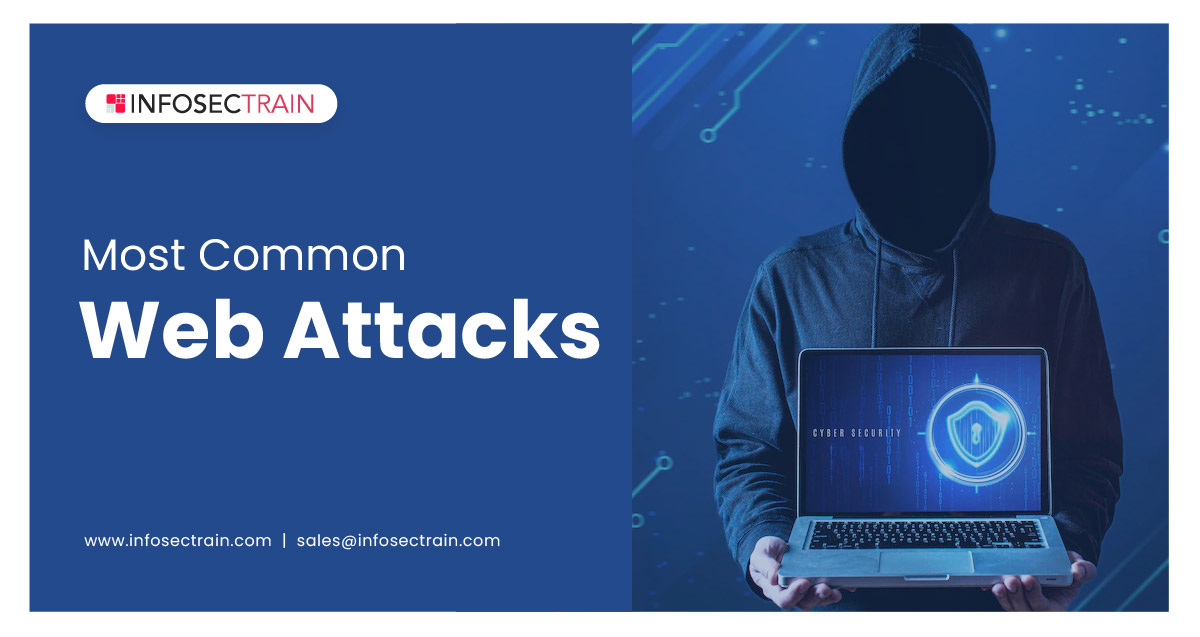With today's society's greater reliance on technology and the
internet, every website on the internet is subject to security threats. Every
day, there are incidents of huge data breaches and vulnerability exploitation
that affect millions of users in a variety of businesses. The threats on the
internet can range from simple human error to sophisticated cybercriminal
attacks. In this article, we have covered the most common web attacks faced by
the world nowadays.
Common Web Attacks:
1. Ransomware Attacks: Ransomware attacks are kind of malware attacks in which the attacker encrypts and locks the sensitive data and important files of the victim, then demands a ransom to access and decrypt the data. We have all read or heard about the WannaCry ransomware attack in 2017, a well-known example of a ransomware attack that infected over 200,000 machines in over 150 countries.
To know more:
·
A Guide to Protect Yourself
From Ransomware Attacks
·
Ransomware- A reality check
(Part 1)
·
Ransomware- A Reality Check
(Part 2)
·
Ransomware- A reality check
(Part 3)
2. Phishing Attacks: Phishing attacks are common web attacks. It belongs to a kind of social engineering attack in which cybercriminals deceive victims into revealing personal information or installing malware. It is frequently used to steal sensitive information from users, such as login credentials and credit card details. They usually achieve this by sending malicious emails that look to be from well-known senders.
To know more:
·
How to Detect Phishing Attacks?
3. Distributed Denial of Service (DDoS) Attacks: Distributed Denial-of-Service (DDoS) attacks are malicious attempts to disrupt a targeted server's, service's, or network's normal traffic by flooding the target or its surrounding infrastructure with internet traffic.
To know more:
·
How to Detect Phishing Attacks?
4. Cross-Site Scripting (XSS) Attacks: Cross-site scripting or XSS attack is a sort of attack in which malicious scripts are injected into websites and online apps to run on the end user's device.
5. Zero-day Attacks: A zero-day attack is when a zero-day exploit is used to harm or steal data from a system that has been exposed to a vulnerability. Zero-day refers to newly found security flaws that hackers can exploit to attack systems.
6. Man-in-the-Middle (MITM) Attacks: A Man-in-the-Middle (MITM) attack is a type of cyberattack in which an attacker eavesdrops or pretends to be a legitimate participant to intercept an existing conversation or data transfer.
To know more:
7. SQL Injection Attacks: SQL injection attacks disrupt the communication route between online application databases and the Structured Query Language (SQL) programming language database by manipulating and compromising it.
To know more:
·
How Does an SQL Injection
Attack Work?
8. Brute-Force Attacks: Brute force attacks are simple attacks with a high success rate. In a brute-force attack, a cybercriminal guesses the login credential, which includes their username and passwords, to acquire illegal access to a system.
9. Broken Authentication Attacks: A broken authentication attack aims to take control of one or more accounts and provide the attacker the same access as the victim.
Final Words:
Web attacks can damage a user, entire business, and even the
government. Therefore, it is vital to learn how to protect yourself and your
organization from these attacks. You can enroll with InfosecTrain to learn everything you need to
know about preventing web attacks and best practices for defending in case of a
web attack in one convenient location.
·
Certified Ethical Hacker
(CEH)
·
Web Application Penetration
Testing

